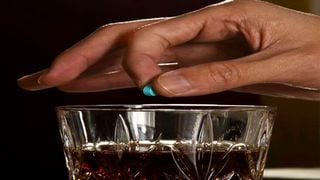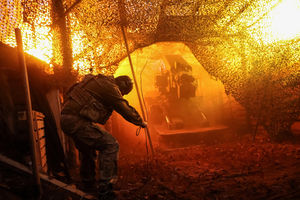
A man puts rohypnol a drug prescribed to mentally ill patients, on an alcoholic drink.
| FotosearchMombasa
Premium
Move over bhang, ecstasy is the new high
Bhang, heroin and cocaine have been the major illegal drugs in Kenya, however, the Nation has learnt that prescription drugs are now taking over the drug world, with ecstasy, or molly, hitting the market.
“It is … methylenedioxymethamphetamine (MDMA), a type of drug that alters moods and perception. It is a drug mostly prescribed to mentally ill patients,” says Dr Martin Achieng.
Its side effects include dizziness and hallucinations.
The most used drug by addicts is amitriptyline, a drug that makes someone asleep, and diazepam, which makes someone stay awake.
“An amitriptyline goes for Sh25 per tablet, while the diazepam costs Sh10,” says Dr Achieng.
However, the Nation has established that ecstasy, which is also known as the “party drug” is the new gold in the drug world. It comes in different colours including, green, yellow, pink and blue.
“It is not a common drug in pharmacies since it is a party drug, but can easily be bought in the black markets,” said a doctor who asked for anonymity.
Shashamane
She called a colleague in another pharmacy who confirmed they had the pill, with one selling for Sh1,500 depending on the milligrams.
“It is mostly used in parties because people want to be hyperactive and talkative. Others can end up having sexual desires. It is just like mabuyus and cookies baked with weed (bhang),” says the source.
Mr Abdullahi Abdulrahman, a community policing official, says the prescription drugs are easy to access at the Coast, and even children are abusing them.
“We still have heroin in the markets, but others are now finding their ways into the markets like the new one called Shashamane,” he says, referring to the drug that originated from Ethiopia.
“It is a bhang, but in powder form. The youths here on the coast are mixing it with another one called bugizi. The bugizi drug is sold at Sh50 or Sh70 depending on its demand,” says Mr Abdulrahman.
Steal from people
He says the new drugs in the market are influencing the youths to mostly attack and steal from people.
“Shashamane is mostly smoked by underage children, before graduating to heroin. They are all over the black markets. The drug addicts themselves are even selling them,” he says.
Bugizi, a local name for rohypnol, or the “rape drug” is prescribed to mentally ill patients. However, it finds its way to the drug dens.
The Nation team wanted to find out whether one could get bugizi without a prescription, but failed after several attempts. However, a drug addict in the company of the team was easily sold the drug, being welcomed to the chemist in question as a customer.
The main reason drug addicts go for prescription drugs is the lower cost compared to heroin and shashamane, says Dr Achieng.
“The shashamane are sold in black markets where a packet goes for Sh500, while the heroin goes for Sh200,” Mr Abdulrahman says.
The drug world is evolving by the day, with addicts now even getting painkillers that are prescription-only.
A drug called speed (amphetamine) is sold at between Sh100 and Sh150, another one called C, a street name by drug addicts, goes for Sh5 in the chemists.
Other prescribed drugs finding their way into the drug dens are red scorpion and Codeine syrup.
“You will be shocked to find out what drug addicts inject into their bodies. Others are even using powders inside electricity cables, even the mosquito repellent powders,” says Mr Abdulrahman.
In a recent interview with the Nation, Nacada CEO Victor Okioma said the prescription drugs are mainly supplied by unethical persons running pharmacies and unethical healthcare providers in hospitals.






